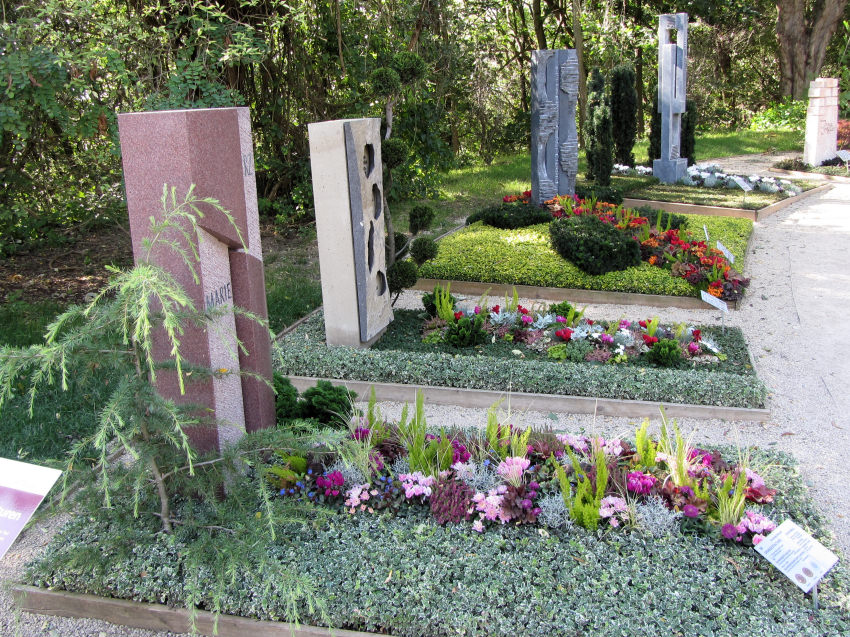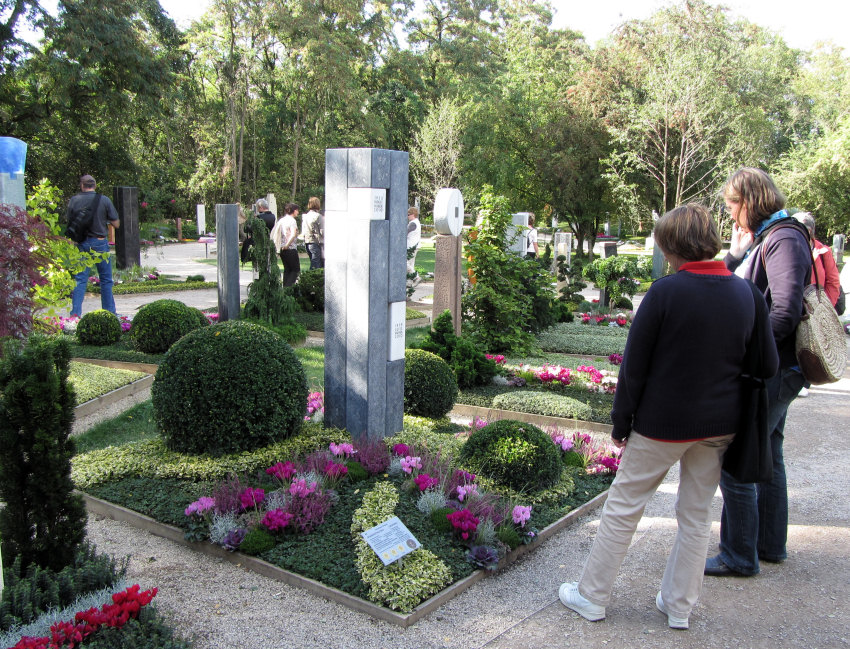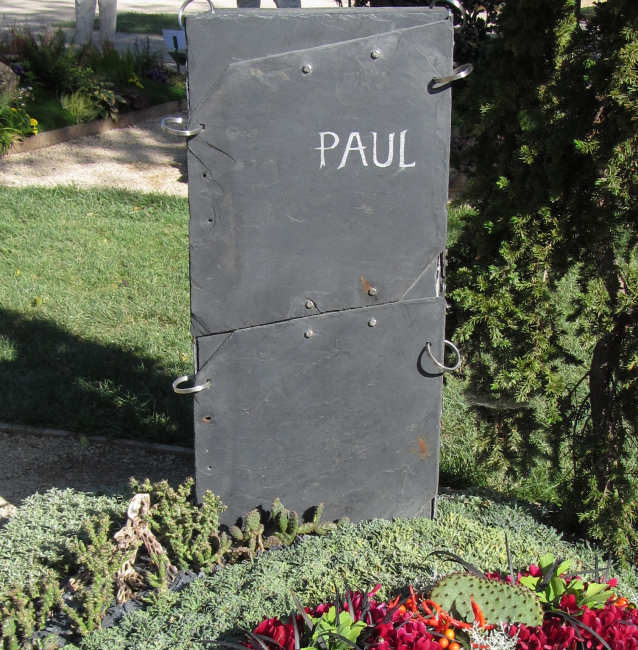
Graves. Headstones. Birth and death dates. Are we in a cemetery? No, we’re back at the Koblenz National Garden Show, where the program assures us, “a romantic woodland glade is the perfect setting for cemetery landscapers and stonemasons to demonstrate their skills in creative grave design.”
One of the first places Joe and I visited upon arriving here in 2000 was the local cemetery. It was so astonishingly beautiful! An American’s idea of grave care is to put out a pot of poinsettias at Christmastime, but many Germans visit the cemetery every day. So the Koblenz National Garden Show gave proper place to this small but very important garden–“My Last Garden,” as they called the exhibition. It was heavily attended, and the attendees were all but taking notes.

Why is the cemetery so important in Germany? I don’t know. Maybe it’s because the climate allows flowers to bloom here so easily. Maybe it’s because towns can be small and competitive feelings can run high. Maybe it’s because Germans rent a grave for only a couple of decades, so they understand that it belongs as much to the survivor as it does to the deceased. Maybe it’s because two devastating European wars within recent memory gave rise to a culture of widowhood, and this is a holdover from that time.
In any case, the exhibition contained examples of gorgeous art and lovely gardening. It could revolutionize the German cemetery–at least until this generation’s plot leases are up. (After that, the headstones are removed and the graves are reused.)
Placards encouraged attendees to express their loved one’s personality through headstone and plant choice, and that gave rise to some very quirky exhibits. Like the one below, for example–one imagines the headstone reading, “Paul. He shouldn’t have gotten that last industrial.”

Tomorrow: A novelist’s final resting place.
Photographs taken September, 2011, in Koblenz, Germany. Text and photos copyright 2011 Clare B. Dunkle.
